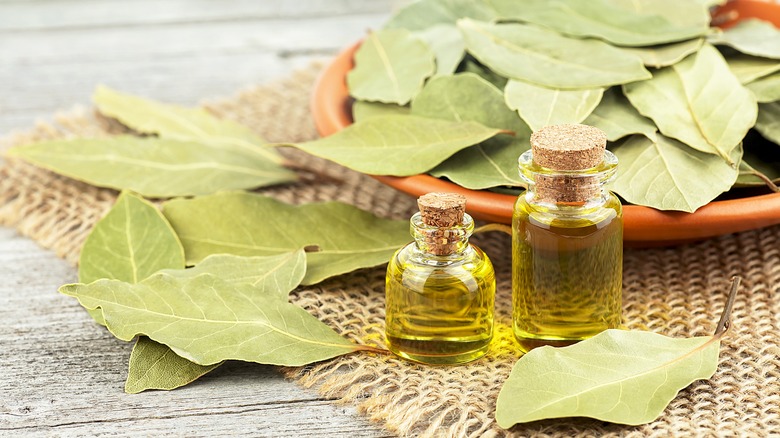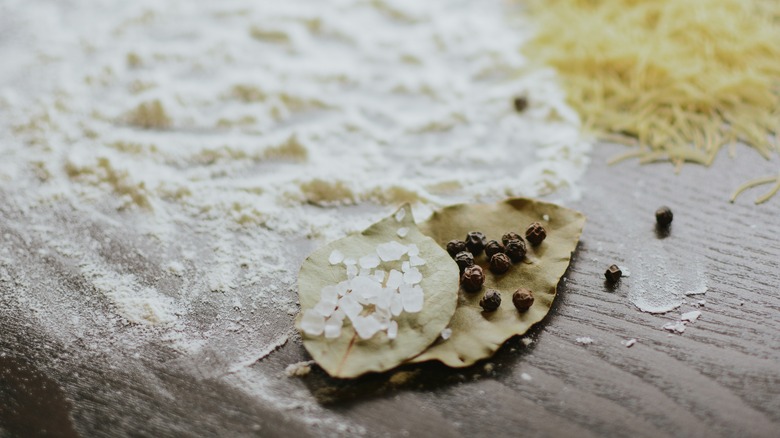Bay Leaves Serve A Bigger Purpose In Your Kitchen Than Adding Flavor To Soup
Bay leaves are often a very important part of making soups and sauces, but that doesn't mean they're a one-trick pony. Not by any means. People have used bay leaves in many areas of their daily lives for hundreds, even thousands of years. In fact, bay leaves can be used in tons of non-cooking applications that make it a must for any household even today.
For one thing, its oil has been traditionally used in medicines with antimicrobial properties and also acts as a natural pest repellent. That means you can use their oil to keep bugs away when camping, or slip a bay leaf in your flour to hold off weevils. If you're looking for a dye that produces a khaki-like result, bay leaves can help turn cloth a light yellow-brown hue. To help get rid of odors, you can make a wreath from fresh or dried leaves that will lend an herby note to any room. Not to mention, if you hang one in the kitchen and find you need to grab a quick leaf for your spaghetti meat sauce, it's easy to pluck one off. The benefits don't stop there, and there's science to back it up.
Why bay leaves work as a pest repellent
Although it is a commonly-held belief that they are toxic when consumed, bay leaves are not at all harmful if eaten; they just taste really, really strong and overpower food flavors sometimes, especially when fresh. But medically speaking, they've got a lot of potential. One 2023 study by Chemical and Biological Technologies in Agriculture even found that bay leaf oil may hinder the growth of certain cancer cells.
But if you want something a little closer to home, bay leaves might also act as a surprisingly effective form of pest repellent. If you're finding that weevils or other insects have taken a liking to your grains, then slipping some bay leaves into your pantry or even directly into a bag of flour could be a method of keeping them away. This trick has been around for quite a while and even has some scientific backing; in fact, a Journal of Stored Products Research from 1986 found that when compounds from crushed bay leaves were added to wheat flour, insects tended to stay far away.
More recently, a 2018 study published in the Journal of Applied and Natural Science specifically took a look at just how bay leaf essential oil worked. Researchers were able to extract the oils from crushed and powdered bay leaves, separating it into a handful of chemical compounds. At certain concentrations, those compounds were found to act as repellents for red rust flour beetles. And sure, your everyday homeowner might not be extracting bay leaf essential oils themselves, but this little herb does seem to have a hidden pest repelling superpower.

